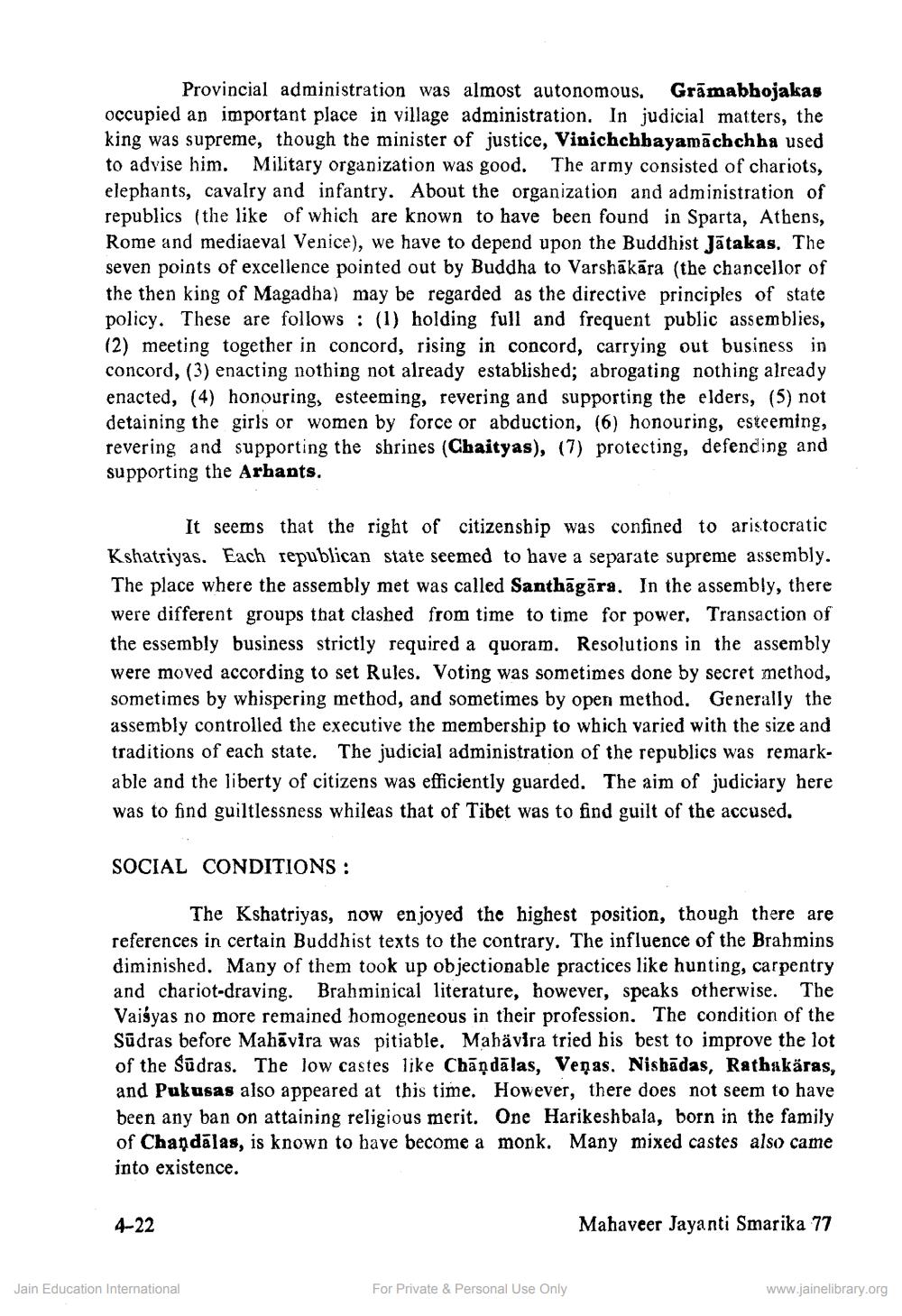________________
Provincial administration was almost autonomous. Grāmabbojakas occupied an important place in village administration. In judicial matters, the king was supreme, though the minister of justice, Vinichchbayamāchchha used to advise him. Military organization was good. The army consisted of chariots, elephants, cavalry and infantry. About the organization and administration of republics (the like of which are known to have been found in Sparta, Athens, Rome and mediaeval Venice), we have to depend upon the Buddhist Jātakas. The seven points of excellence pointed out by Buddha to Varshākāra (the chancellor of the then king of Magadha) may be regarded as the directive principles of state policy. These are follows: (1) holding full and frequent public assemblies, (2) meeting together in concord, rising in concord, carrying out business in concord, (3) enacting nothing not already established; abrogating nothing already enacted, (4) honouring, esteeming, revering and supporting the elders, (5) not detaining the girls or women by force or abduction, (6) honouring, esteeming, revering and supporting the shrines (Chaityas), (7) protecting, defending and supporting the Arhants.
It seems that the right of citizenship was confined to aristocratic Kshatriyas. Each republican state seemed to bave a separate supreme assembly. The place where the assembly met was called Santhāgāra. In the assembly, there were different groups that clashed from time to time for power. Transaction of the essembly business strictly required a quoram. Resolutions in the assembly were moved according to set Rules. Voting was sometimes done by secret method, sometimes by whispering method, and sometimes by open method. Generally the assembly controlled the executive the membership to which varied with the size and traditions of each state. The judicial administration of the republics was remarkable and the liberty of citizens was efficiently guarded. The aim of judiciary here was to find guiltlessness whileas that of Tibet was to find guilt of the accused.
SOCIAL CONDITIONS :
The Kshatriyas, now enjoyed the highest position, though there are references in certain Buddhist texts to the contrary. The influence of the Brahmins diminished. Many of them took up objectionable practices like hunting, carpentry and chariot-draving. Brahminical literature, however, speaks otherwise. The Vaisyas no more remained homogeneous in their profession. The condition of the Sūdras before Mahāvira was pitiable. Mahävira tried his best to improve the lot of the Sūdras. The low castes like Chāņdālas, Venas. Nisbādas, Rathakäras, and Pukusas also appeared at this time. However, there does not seem to have been any ban on attaining religious merit. One Harikesh bala, born in the family of Chaņdālas, is known to have become a monk. Many mixed castes also came into existence.
4-22
Mahaveer Jayanti Smarika 77
Jain Education International
For Private & Personal Use Only
www.jainelibrary.org




